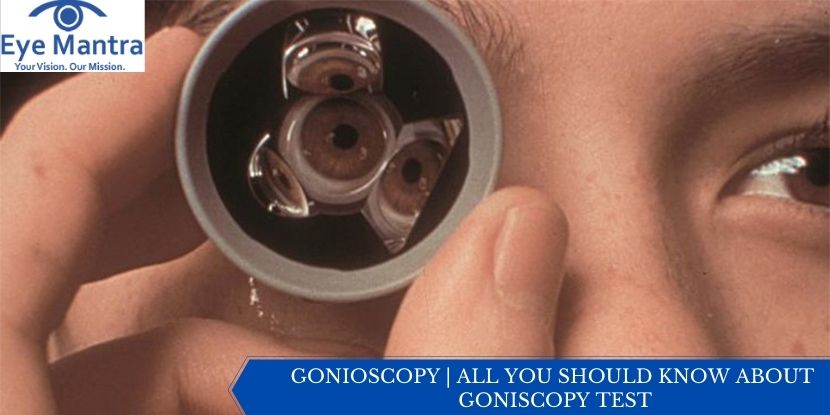Contents
All About Gonioscopy Test
Purpose of Gonioscopy Test
Who Needs a Gonioscopy
By the time a person reaches the age of 40, one can detect early signs of vision changes and eye diseases. At this point of time in life, all people should get a baseline eye disease screening performed on them by an ophthalmologist. To search for signs of glaucoma, the ophthalmologist performs a gonioscopy exam on the patient to examine and analyze the drainage angle thoroughly, this involves its functioning as well as its appearance.
Gonioscopy and Glaucoma
Types of Goniolens or Gonioscope
Koeppe Direct Goniolens
This lens is transparent, and the ophthalmologist places it on one’s cornea directly with some lubricating fluid, which helps him avoid any damage that can be caused to the surface of the eye. This goniolens’s exterior surface has a very steep curvature, which optically eliminates the total internal reflection and provides the ophthalmologist with a clear view of the iridocorneal angle also known as the drainage angle. However, this requires the patient to be laying down, hence it is impossible to be easily used with the help of a normal slit lamp in an optometric setting. However, a functioning microscope is an available option, when it comes to an ophthalmological setting.
Goldmann Indirect Goniolens
This lens is truncated in shape and it uses mirrors to reflect the light from the drainage angle towards the direction of the ophthalmologist. When used, the image of the drainage lens is roughly orthogonal to the back surface, which makes it very easy and reliable in making observations and magnifications with a slit lamp. The curved side of the lens is not rested on the cornea, but vaults around it, and the ophthalmologist uses lubricating fluid to fill the gap. On the sclera, rests the border of the front surface of the lens. This lens can be used with the patient sitting upright, and not laying down. Other mirrors of this device can also be used to analyze other parts of the eye, which include the retina and the ora serrate.
Zeiss indirect goniolens
This device functions using a similar technique as the Goldmann. However, this device uses prisms instead of mirrors. It has four symmetrical prisms which enable visualization of the drainage angle, in four parts of the eyes simultaneously, which makes it work well with a slit lamp. The most significant part of this device is that it has a smaller front, that rests on the cornea, where no lubricating fluid is required to fill the gap, and only the patient’s tear film allows for indentation gonioscopy, which helps the ophthalmologist perform further and more detailed diagnosis on the patient.
Gonioscopy at Eye mantra
Many optometrists perceive gonioscopy to be difficult to perform and shy away from performing it routinely. It is a learned skill that requires a great deal of experience. While there is a learning curve, with perseverance it can be mastered. Over time, the practitioner will learn to stabilize the gonioscopic image by making micro adjustments as the procedure is being performed. Proper technique is important, as undue pressure may open a narrow angle, giving a false clinical impression. Many eyes need to be observed to understand the subtle differences between the normal and abnormal angle. So it’s good to carefully choose the best possible staff who can facilitate such complex processes with ease. Therefore at Eye Mantra, here we have the most skilled doctors.
The best way to treat your eyes is to visit your eye care professional and get your eyes checked regularly. He will be able to assess the best method of treatment for your eye ailment. Visit our website Eyemantra. To book an appointment call +91-9711115191. Or mail us at [email protected]. Our other services include Retina Surgery, Specs Removal, Cataract Surgery, and many more.
Related Articles:



